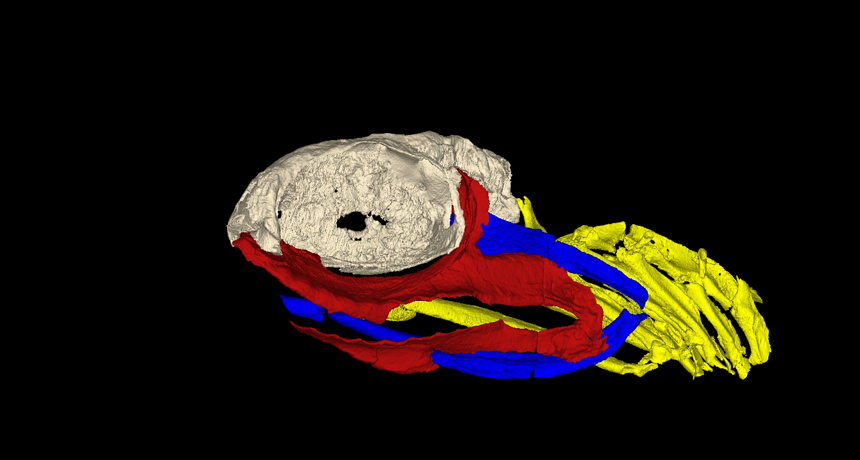Fish gill fossils gnaw at ideas of jaw evolution

This three-dimensional reconstruction shows the skull of the sharklike Ozarcus mapesae. The braincase appears in light gray, the jaw in red, the gill arches in yellow and the horseshoe-shaped hyoid bone in blue.
A. Pradel, AMNH







